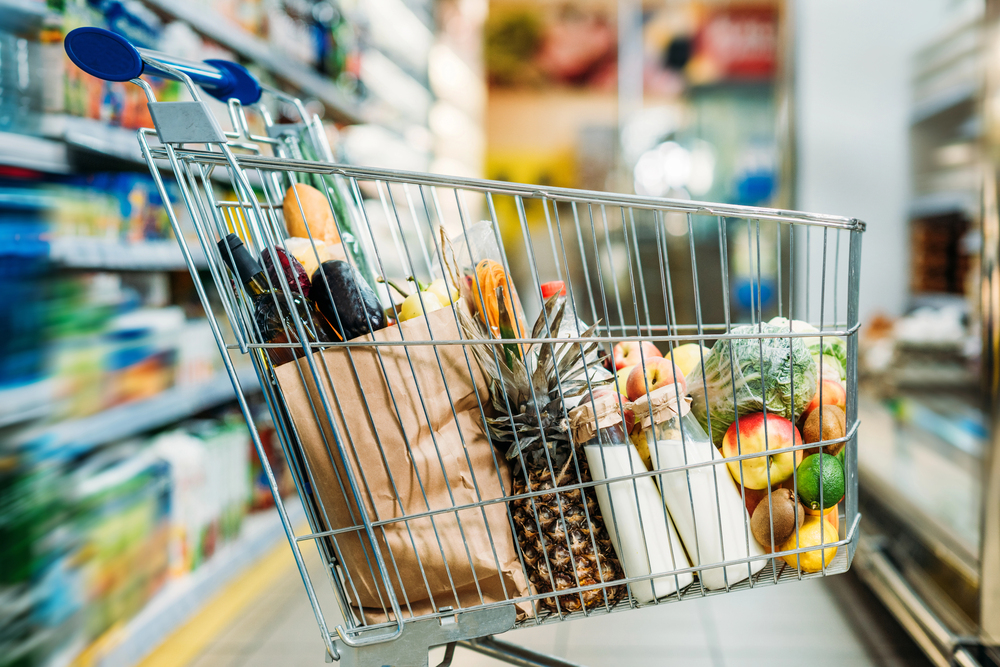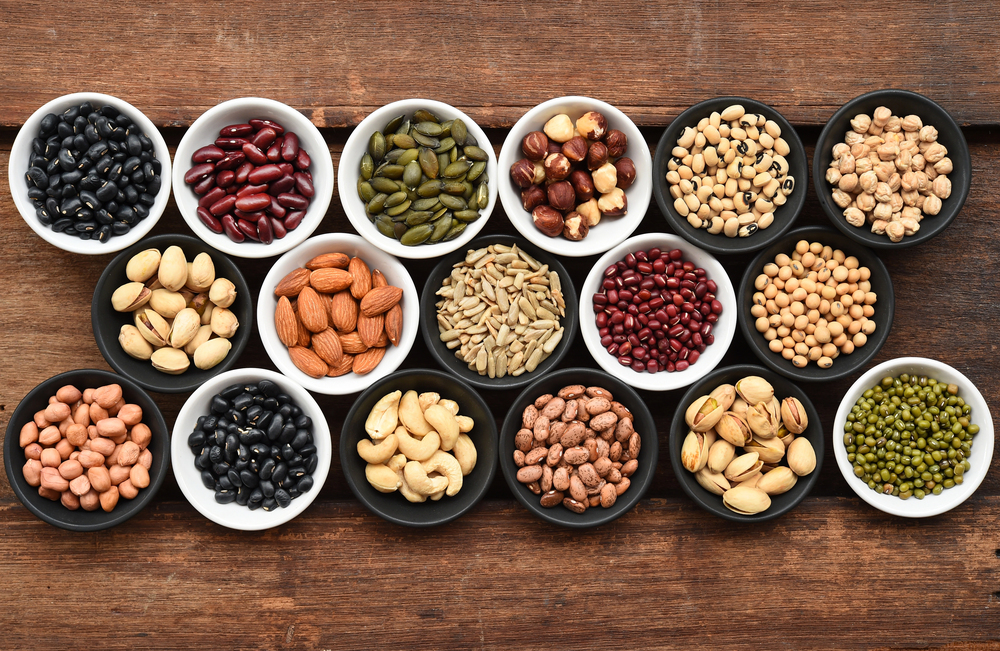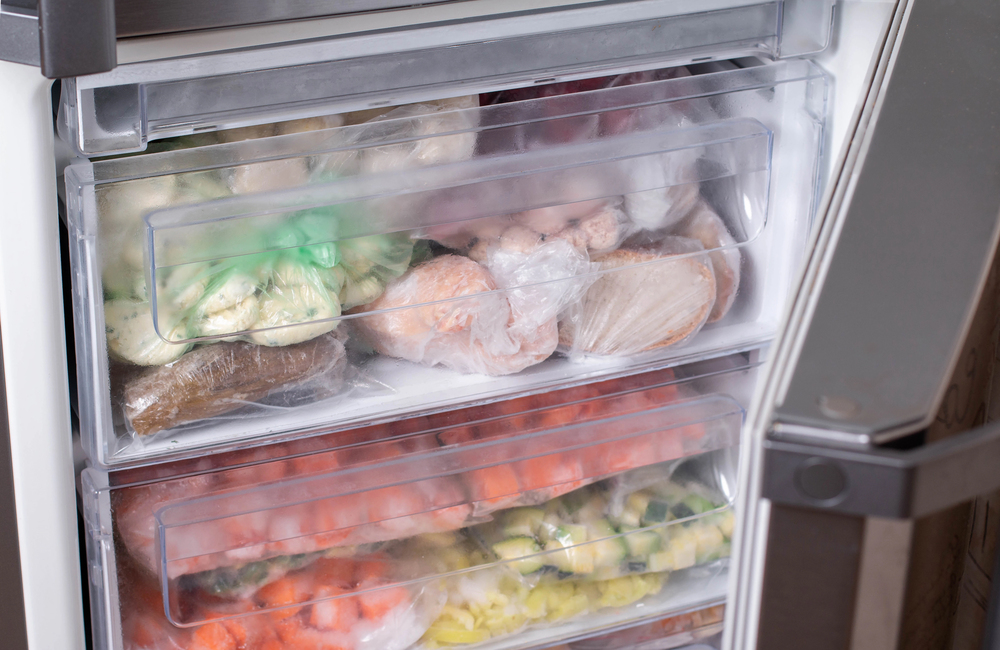The Complete Guide: How Can Retirees Save Money on Groceries in 2025

Last Updated: July 12, 2025
With food prices rising 2.9% over the past year according to the Bureau of Labor Statistics Consumer Price Index, millions of American retirees are struggling to maintain their food budgets on fixed incomes. If you're asking "how can retirees save money on groceries," you're not alone—nearly 7 million older adults faced food insecurity in 2022, and 9.3% of U.S. households with adults aged 65 and older were food insecure in 2023.
The good news? There are proven strategies that can help retirees cut their grocery bills by 30-50% while maintaining nutritional quality. This comprehensive guide reveals the most effective, research-backed methods for saving money on groceries during retirement.
Understanding the Grocery Challenge for Retirees
The Real Cost of Grocery Inflation for Seniors
The Consumer Price Index research series for Americans 62 years and older shows that seniors face unique grocery challenges that differ from the general population. Recent data shows that retirees spend an average of 25% of their monthly budget on food expenses, according to retirement spending research.
Key Statistics:
- 47.4 million people lived in food-insecure households in 2023
- Only 42% of eligible elderly individuals are enrolled in SNAP benefits
- Food costs have increased 2.9% over the past year, with eggs rising 41.5% annually
Why Traditional Grocery Advice Doesn't Work for Retirees
Most money-saving grocery advice targets working families with different needs, storage capacity, and consumption patterns. Retirees face unique challenges:
- Smaller household sizes make bulk buying less practical
- Fixed incomes limit flexibility when prices spike
- Health considerations may require specific dietary needs
- Transportation limitations can restrict shopping frequency
- Physical limitations may affect shopping ability
The 15 Most Effective Strategies for Retirees to Save on Groceries
1. Master Senior Discount Programs
The Strategy: Over 30 major grocery chains offer senior discounts, but most require specific days and age requirements.
Top Senior Grocery Discounts (2024):
- Fred Meyer: 10-15% off on first Tuesday of each month (55+)
- Fry's Food Stores: 10% off on first Wednesday of each month (55+)
- Harris Teeter: 5% discount every Thursday (60+)
- Albertsons: 10% off first Wednesday of each month (55+)
- Brookshire's: 5% off every Tuesday (60+)
- Bi-Lo: 5% off every Wednesday (60+)
Pro Tip: Call your local stores to confirm policies, as senior discount availability varies by location. Many stores don't widely advertise these programs.

2. Time Your Shopping for Maximum Markdowns
The Strategy: Most grocery stores follow predictable markdown schedules that retirees can leverage.
Optimal Shopping Times:
- Wednesday mornings: Primary markdown day for meat (30-50% off)
- Sunday evenings after 5:30 PM: Up to 90% off on produce and prepared foods
- Early morning (store opening): Fresh overnight markdowns
- 7-10 days after holidays: 50-75% off seasonal items
Best Practices:
- Shop during off-peak hours when you have more time to hunt for deals
- Build relationships with store employees who can alert you to markdown schedules
- Focus on items with red discount tags or "Manager's Special" labels
3. Optimize Your Meal Planning Strategy
The Strategy: Strategic meal planning can reduce grocery costs by 25-30% while minimizing food waste.
The "Three-Week Rule": Plan meals around a three-week rotation rather than weekly planning. This allows you to:
- Stock up when items are on sale
- Use up ingredients before they expire
- Reduce decision fatigue
- Take advantage of store sale cycles
Meal Planning Formula:
- Inventory first: Check what you already have
- Plan around sales: Use store flyers to guide meal choices
- Overlap ingredients: Choose recipes that share common ingredients
- Include flexible meals: Plan 2-3 meals per week that can use whatever's on sale
4. Strategic Bulk Buying for Smaller Households
The Strategy: Bulk buying can save 20-40% on groceries when done strategically for smaller households.
Smart Bulk Items for Seniors:
- Frozen vegetables: Don't expire quickly, portion easily
- Canned goods: Long shelf life, consistent pricing
- Dry goods: Rice, pasta, beans, oats
- Meat for freezing: Buy family packs, divide into meal portions
- Household items: Paper products, cleaning supplies
Bulk Buying Guidelines:
- Calculate cost per unit, not just total price
- Only buy what you can realistically use
- Partner with neighbors or friends for group buying
- Use a small chest freezer to extend bulk buying opportunities
5. Leverage Government Food Assistance Programs
The Strategy: Multiple federal programs specifically help seniors with food costs, yet many eligible seniors aren't enrolled.
Key Programs for Seniors:
SNAP (Food Stamps):
- Average benefit: $188/month for senior households
- Only 42% of eligible seniors participate
- Covers most food items at grocery stores
Commodity Supplemental Food Program (CSFP):
- Monthly food box worth approximately $50 retail value
- Costs USDA only $27 per participant
- Available to seniors 60+ earning 130% of poverty level ($18,954 for individuals)
Senior Farmers Market Nutrition Program:
- Provides coupons for fresh produce
- Use at farmers markets, roadside stands, community farms
- Focuses on fresh fruits, vegetables, herbs, and honey
Medicare Advantage Flex Cards:
- Some plans offer food allowance cards
- Can help pay for groceries, utilities, and other necessities
- Contact your insurance provider to check availability
6. Master the Art of Generic Brand Shopping
The Strategy: Store brands offer 30-50% savings with comparable quality to name brands.
Best Generic Brand Categories:
- Cereals: Often identical to name brands
- Condiments: Minimal taste difference
- Cleaning products: Same active ingredients
- Medications: FDA-regulated identical formulations
- Staples: Flour, sugar, salt, spices
Quality Testing Approach:
- Try one item at a time to assess quality
- Most stores offer satisfaction guarantees
- Start with items where brand loyalty is lowest
7. Utilize Technology and Apps for Savings
The Strategy: Modern technology can help seniors find deals and track savings automatically.
Essential Apps for Grocery Savings:
- Store apps: Clip digital coupons, see weekly ads
- Flipp: Compare prices across multiple stores
- Ibotta: Earn cash back by scanning receipts
- Fetch: Points for any receipt, no pre-selecting offers
- Honey: Automatically applies coupon codes for online grocery orders
Digital Strategy Tips:
- Set up accounts during off-peak hours when you have time
- Ask grandchildren or tech-savvy friends to help with initial setup
- Focus on one app at a time to avoid overwhelm
8. Shop Multiple Stores Strategically
The Strategy: Different stores excel at different categories, and strategic multi-store shopping can save 15-25%.
Store Specialization Strategy:
- Aldi: Produce, dairy, pantry staples (can save up to 40%)
- Costco/Sam's Club: Bulk non-perishables, meat, household items
- Dollar stores: Canned goods, cleaning supplies, paper products
- Ethnic markets: Spices, produce, specialty items
- Traditional supermarkets: Sales items, meat markdowns
Efficient Multi-Store Shopping:
- Plan routes to minimize driving
- Shop multiple stores on the same trip
- Keep a running list of each store's best deals
- Time visits based on each store's markdown schedule
9. Focus on Nutrient-Dense, Budget-Friendly Foods
The Strategy: Prioritize foods that provide maximum nutrition per dollar, especially important for seniors' health needs.
Top Budget Nutrition Champions:
- Eggs: Complete protein, versatile, affordable despite price increases
- Beans and lentils: Protein, fiber, long shelf life
- Oatmeal: Fiber, fills you up, costs pennies per serving
- Frozen vegetables: More affordable than fresh, retain nutrients
- Chicken thighs: Less expensive than breasts, more flavorful
- Sweet potatoes: Vitamin A, fiber, versatile
- Canned fish: Omega-3s, protein, shelf-stable

Nutrition-Per-Dollar Guidelines:
- Compare protein cost per gram, not just per pound
- Choose foods that serve multiple nutritional purposes
- Prioritize items that can be meal centerpieces
10. Create a Grocery Shopping Co-Op
The Strategy: Partner with other seniors to increase buying power and share costs.
Co-Op Benefits:
- Split bulk purchases appropriately
- Share transportation costs
- Combine shopping trips for efficiency
- Exchange coupons and deal information
Setting Up a Senior Shopping Co-Op:
- Start with 2-3 trusted neighbors or friends
- Focus on non-perishables initially
- Establish clear cost-sharing agreements
- Meet monthly to plan group purchases
- Rotate shopping responsibilities
11. Maximize Your Freezer Space
The Strategy: Proper freezer management can extend savings from sales and reduce food waste.
Freezer Organization System:
- Zone by category: Meat, vegetables, prepared foods
- Label everything: Date and contents
- Use FIFO method: First In, First Out
- Portion appropriately: Single or couple servings
Best Freezer Practices:
- Cook large batches when energy costs are lower
- Freeze seasonal produce at peak prices
- Wrap properly to prevent freezer burn
- Keep a freezer inventory list
12. Shop the Perimeter First
The Strategy: Store perimeters contain whole foods that are typically more affordable per nutrient than processed center-aisle items.
Perimeter Shopping Benefits:
- Whole foods vs. processed foods
- Better prices per nutritional value
- Less packaging waste
- More cooking flexibility
Center Aisle Strategy:
- Shop perimeter first for meal foundations
- Use center aisles for specific sale items only
- Avoid impulse purchases of processed foods
- Focus on cooking basics: spices, oils, grains
13. Understand Store Psychology and Layout
The Strategy: Recognize how stores are designed to encourage spending and shop accordingly.
Store Layout Awareness:
- End caps: Often feature sale items but check unit prices
- Eye level: Most expensive items are placed here
- Checkout lanes: Designed for impulse purchases
- Milk placement: Usually in back to encourage browsing
Counter-Strategy Shopping:
- Always check high and low shelves for better deals
- Use a basket instead of cart for smaller purchases
- Shop with a list and stick to it
- Avoid shopping when hungry or tired
14. Seasonal Shopping Strategies
The Strategy: Align purchases with natural seasons and agricultural cycles for maximum savings.
Seasonal Produce Calendar:
- Spring: Asparagus, peas, strawberries
- Summer: Tomatoes, corn, berries, stone fruits
- Fall: Apples, pumpkins, winter squash
- Winter: Citrus, root vegetables, cabbage
Seasonal Strategies:
- Buy extra when in season and preserve
- Plan meals around seasonal availability
- Shop farmers markets at end of day for deals
- Learn preservation techniques: freezing, canning, dehydrating
15. Prescription and Healthcare Integration
The Strategy: Coordinate grocery shopping with healthcare needs and pharmacy visits.
Healthcare-Food Integration:
- Pharmacy combo trips: Many pharmacies are in grocery stores
- Health-conscious planning: Factor medical dietary needs into budget
- Medication timing: Some medications affect appetite or food needs
- Insurance benefits: Some Medicare plans include grocery benefits
Advanced Strategies for Maximum Savings
The "Zero-Waste" Approach
Transform potential food waste into additional meals:
- Vegetable scraps: Make broth
- Overripe fruit: Freeze for smoothies
- Bread ends: Make croutons or breadcrumbs
- Meat bones: Create stock
Receipt Analysis Method
Track and analyze your grocery receipts to identify patterns:
- Average savings percentage: Track your coupon and sale savings
- Category spending: Identify where most money goes
- Impulse purchase patterns: Recognize triggers
- Store comparison: Which stores provide best overall value
The "Pantry Challenge"
Once monthly, shop only from your pantry to:
- Use up older items
- Identify what you actually need
- Prevent overbuying
- Save money that month
Creating Your Personal Grocery Savings Plan
Step 1: Assess Your Current Situation
Calculate Your Baseline:
- Track grocery spending for one month
- Note shopping patterns and store preferences
- Identify current money-saving efforts
- Document dietary needs and restrictions
Step 2: Set Realistic Goals
Savings Targets:
- Conservative goal: 15-20% reduction
- Moderate goal: 25-30% reduction
- Aggressive goal: 35-40% reduction
Step 3: Choose Your Top 5 Strategies
Start with strategies that match your lifestyle:
- Limited mobility: Focus on store loyalty programs and delivery services
- Active seniors: Leverage multi-store shopping and bulk buying
- Social seniors: Create shopping co-ops and group buying
- Tech-comfortable: Use apps and digital coupons extensively
Step 4: Track Your Progress
Monthly Review:
- Calculate savings percentage
- Adjust strategies based on results
- Celebrate successes
- Identify challenges and solutions
Common Mistakes to Avoid
The "False Economy" Trap
Avoid these common mistakes:
- Buying poor quality items that need replacing
- Stockpiling beyond reasonable usage
- Ignoring expiration dates
- Choosing convenience over nutrition
The "Penny Wise, Pound Foolish" Scenario
Remember:
- Your time has value
- Gas money for multiple store trips
- Storage costs (freezer, pantry space)
- Health implications of poor nutrition

Technology Tools for Senior Grocery Shoppers
Smartphone Apps
Free Apps Worth Learning:
- Store apps: Every major chain has one
- Flipp: Price comparison across stores
- Ibotta: Cash back on purchases
- Honey: Automatic coupon codes
Online Grocery Services
When Online Shopping Makes Sense:
- Transportation limitations: Delivery can be cost-effective
- Bulk buying: Some online prices beat store prices
- Specialty diets: Easier to find specific items
- Physical limitations: Avoid heavy lifting
Seasonal Action Plan
Spring (March-May)
- Clean out pantry and freezer
- Start garden planning
- Take advantage of Easter sales
- Shop for spring produce
Summer (June-August)
- Maximize fresh produce savings
- Preserve seasonal abundance
- Utilize outdoor cooking to save energy
- Shop farmers markets
Fall (September-November)
- Stock up for winter
- Take advantage of harvest season
- Plan holiday meal budgets
- Prepare preservation projects
Winter (December-February)
- Maximize holiday sales
- Focus on comfort foods
- Use preserved foods
- Plan for spring gardens
Long-term Financial Impact
Annual Savings Potential
Conservative Savings (20%):
- Monthly grocery bill: $500
- Annual savings: $1,200
- 10-year savings: $12,000
Moderate Savings (30%):
- Monthly grocery bill: $500
- Annual savings: $1,800
- 10-year savings: $18,000
Aggressive Savings (40%):
- Monthly grocery bill: $500
- Annual savings: $2,400
- 10-year savings: $24,000
Reinvestment Opportunities
Use grocery savings for:
- Healthcare costs: Prescription medications, medical equipment
- Home improvements: Safety modifications, energy efficiency
- Travel and entertainment: Enhance quality of life
- Emergency fund: Financial security
Frequently Asked Questions
Q: How much can retirees realistically save on groceries?
A: Most retirees can save 20-35% on their grocery bills by implementing multiple strategies consistently. The key is starting with 2-3 methods and gradually adding more as they become habits.
Q: Are senior discounts worth changing stores?
A: Yes, if the discount is significant and you can shop efficiently. A 10% discount on a $100 shopping trip saves $10, which adds up to $520 annually for weekly shopping.
Q: Is it worth buying organic foods when on a tight budget?
A: Focus on the "Dirty Dozen" list—foods highest in pesticide residues—for organic purchases. For others, conventional options are fine and significantly cheaper.
Q: How do I avoid food waste when buying sale items?
A: Use the "one-week rule"—only buy sale items you can realistically use within a week, unless you have proper storage and preservation plans.
Q: Should I join multiple warehouse clubs?
A: Generally no. Calculate whether you'll spend enough to justify multiple memberships. Most seniors do better with one warehouse club membership plus strategic regular store shopping.
Regional Considerations
Urban vs. Rural Shopping
Urban Advantages:
- More store options
- Better public transportation
- More frequent sales
- Diverse market options
Rural Strategies:
- Plan longer shopping trips
- Use online ordering for bulk items
- Coordinate with neighbors
- Consider driving to larger cities monthly
Climate Considerations
Hot Climates:
- Shop early morning or evening
- Use insulated bags
- Consider delivery during extreme heat
- Focus on shelf-stable items
Cold Climates:
- Stock up before bad weather
- Use proper winter storage
- Consider delivery during storms
- Plan for seasonal price variations
Conclusion: Your Path to Grocery Savings Success
Saving money on groceries as a retiree isn't just about cutting costs—it's about maintaining independence, health, and quality of life on a fixed income. The strategies outlined in this guide can help you reduce your grocery bills by 20-40% while improving your nutrition and shopping experience.
According to AARP's research on retiree grocery habits, the most successful money-saving retirees combine multiple strategies rather than relying on just one approach. The National Council on Agingemphasizes that consistency, not perfection, is the key to long-term success.
Start with these three immediate actions:
- Sign up for your grocery store's loyalty program and download their app
- Find out your local stores' senior discount days and plan your shopping accordingly
- Create a simple meal planning system based on store sales and seasonal produce
Remember, the most effective grocery savings plan is one you'll actually follow. Start small, be consistent, and gradually add more strategies as they become habits. Your future self—and your bank account—will thank you.
The key to success is consistency, not perfection. Even implementing just three of these strategies can result in significant savings over time. Start today, and begin building a more affordable, sustainable approach to grocery shopping in retirement.
Sources and Additional Resources
- AARP - 11 Mistakes Retirees Make at the Supermarket
- National Council on Aging - Top Tips Older Adults Can Use to Save Money
- USDA - Food assistance programs for older adults
- Bureau of Labor Statistics - Consumer Price Index Summary
- Feeding America - Senior Hunger Research
- NCOA - Senior SNAP Participation
- USDA ERS - Food Security in the U.S. - Key Statistics
- USDA ERS - Food Insecurity among Older Adults
- USDA - SNAP Household Characteristics Report
- NCOA - Food Insecurity Facts for Seniors
- Feeding America - Commodity Supplemental Food Program
- AARP - Supermarket Senior Discounts



